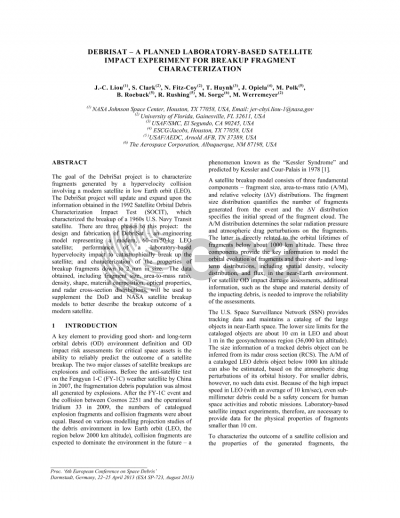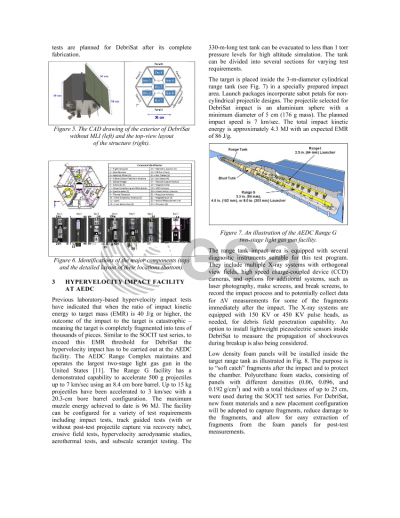Document details

Abstract
The goal of the DebriSat project is to characterize fragments generated by a hypervelocity collision involving a modern satellite in low Earth orbit (LEO). The DebriSat project will update and expand upon the information obtained in the 1992 Satellite Orbital Debris Characterization Impact Test (SOCIT), which characterized the breakup of a 1960s U.S. Navy Transit satellite. There are three phases to this project: the design and fabrication of DebriSat - an engineering model representing a modern, 60-cm/50-kg LEO satellite; performance of a laboratory-based hypervelocity impact to catastrophically break up the satellite; and characterization of the properties of breakup fragments down to 2 mm in size. The data obtained, including fragment size, area-to-mass ratio, density, shape, material composition, optical properties, and radar cross-section distributions, will be used to supplement the DoD and NASA satellite breakup models to better describe the breakup outcome of a modern satellite.
Preview







